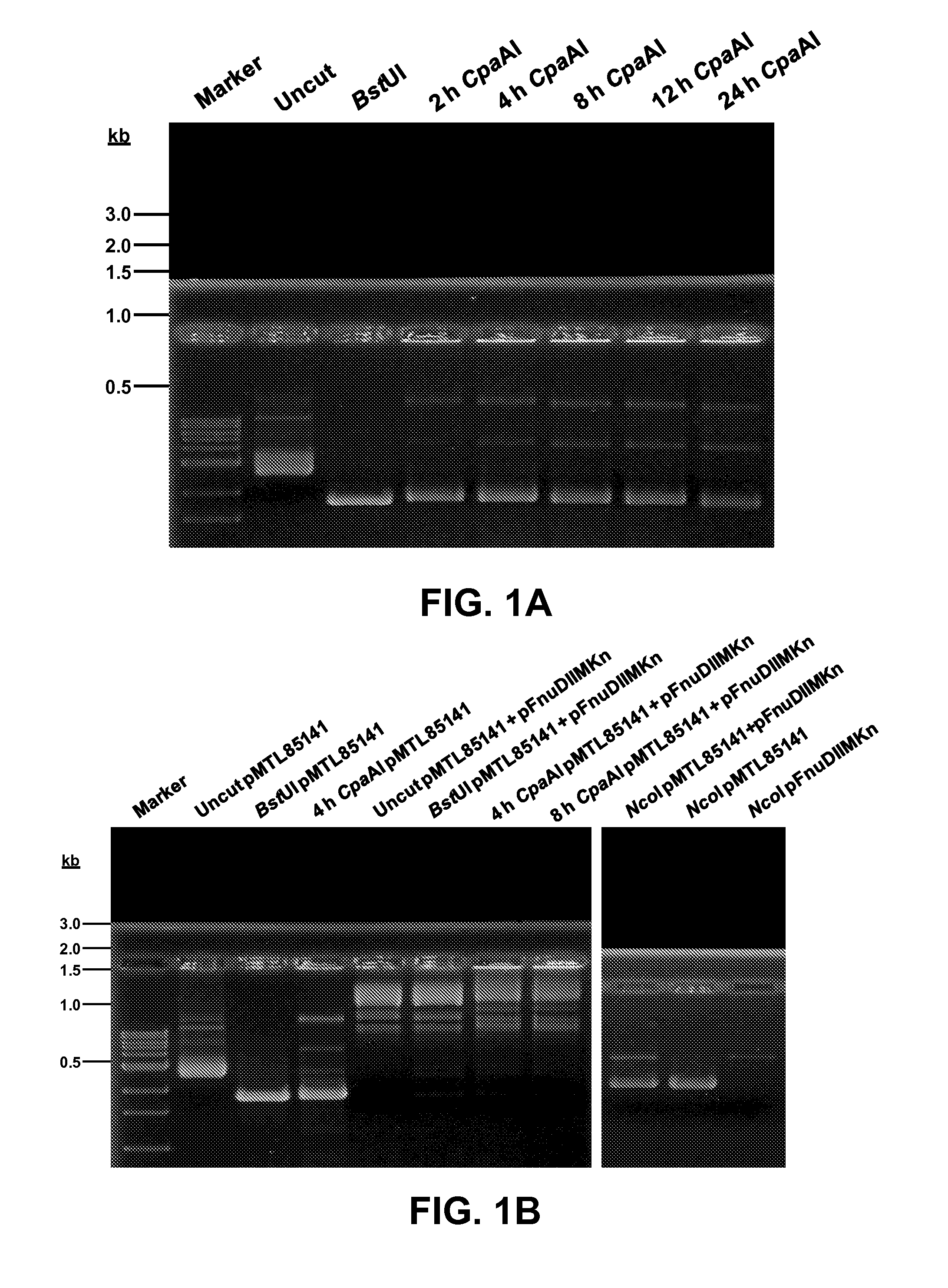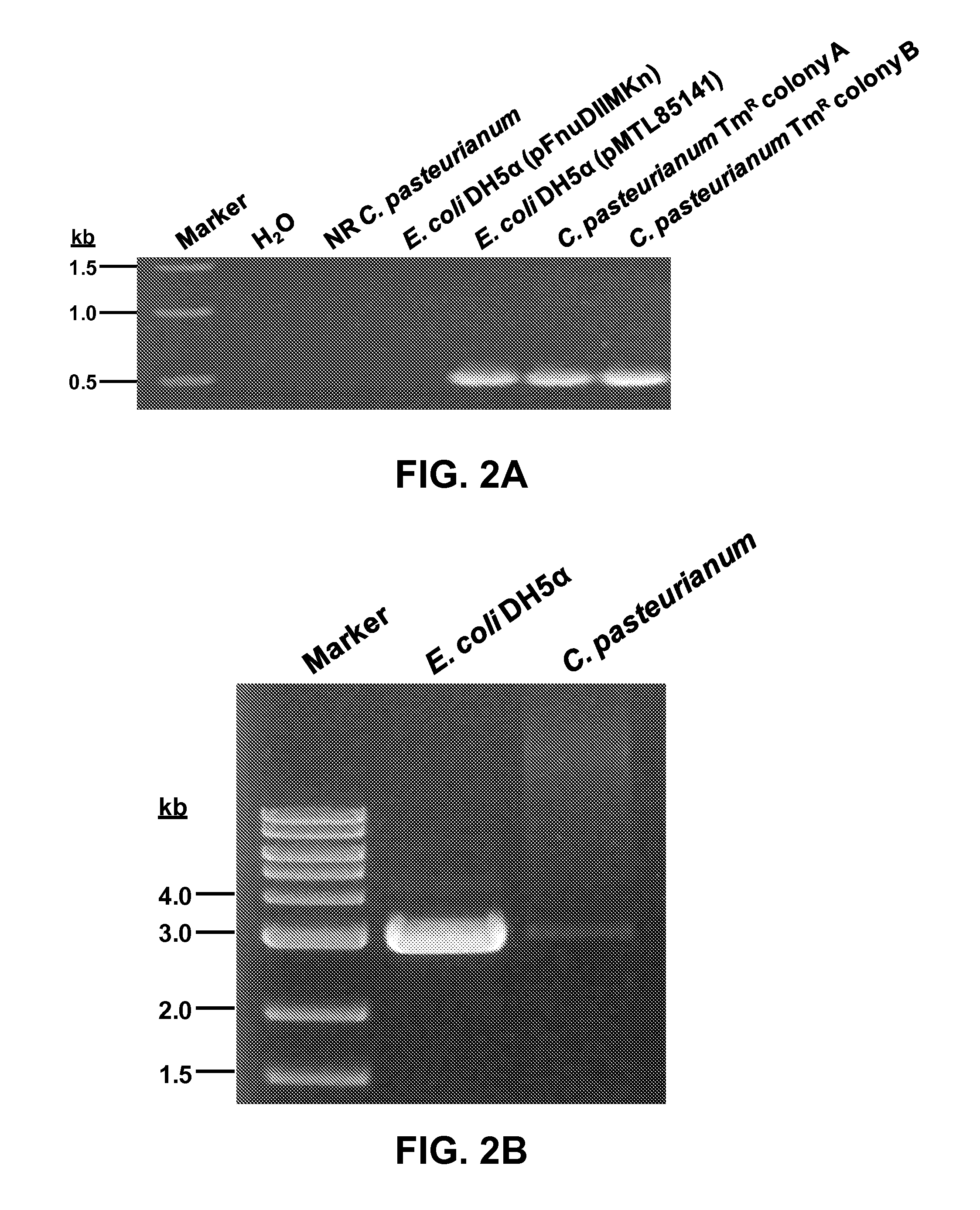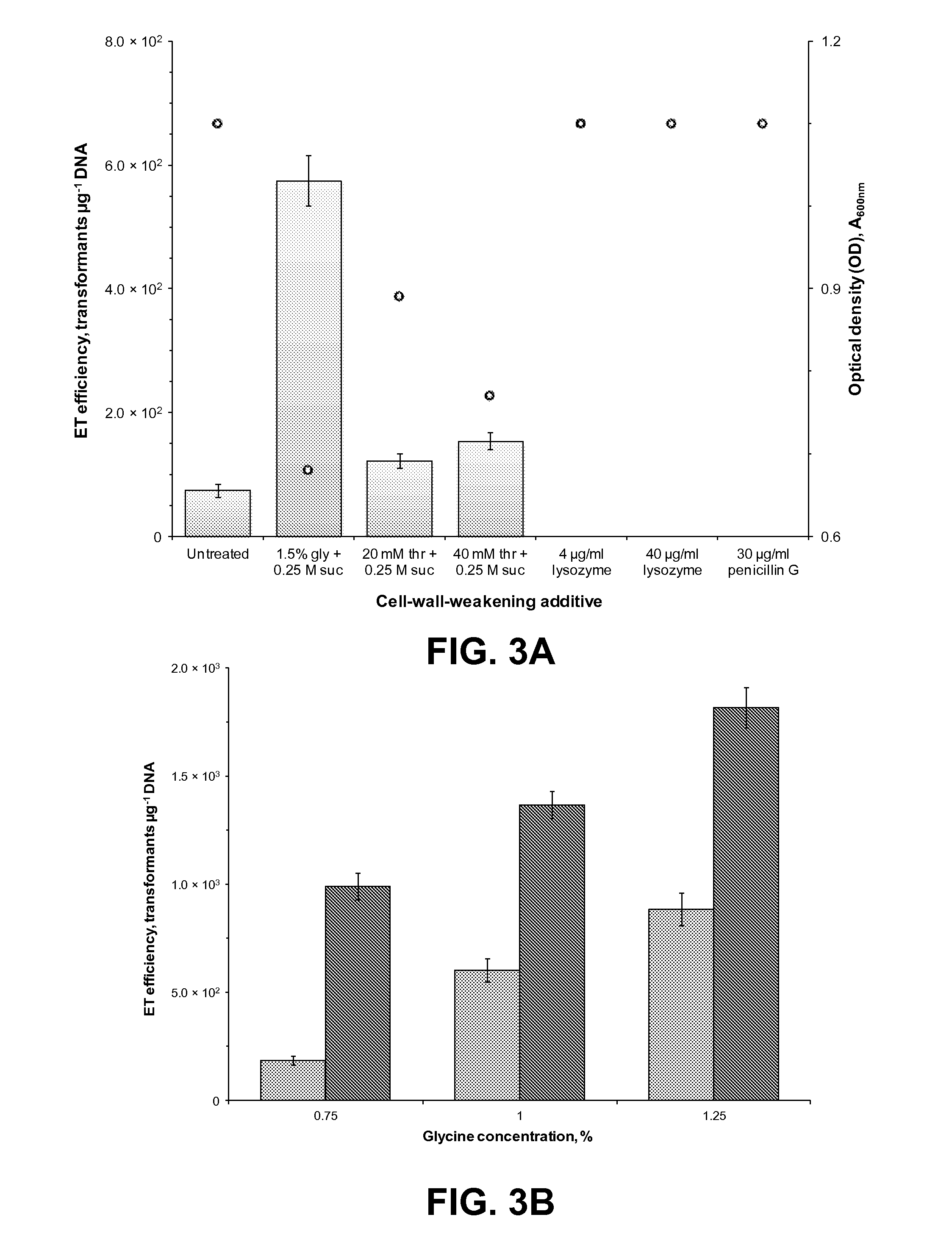Electrotransformation of Clostridium pasteurianum
a technology of clostridium pasteurianum and electrotransformation, which is applied in the field of bacteria cells, can solve the problems of high cost, inability to meet the needs of transformation, and inability to meet the needs of transformation, and achieve the effect of being more amenable to transformation
- Summary
- Abstract
- Description
- Claims
- Application Information
AI Technical Summary
Benefits of technology
Problems solved by technology
Method used
Image
Examples
example 1
[0047]The bacterial strains, plasmids, and oligonucleotides utilized in this invention are listed in Table 1. E. coli DH5α was utilized for routine vector construction and propagation, and E. coli ER1821 for maintenance of M.FnuDII-methylated E. coli-C. pasteurianum shuttle vectors. C. pasteurianum ATCC™ 6013 (Winogradsky 5; W5) was acquired from the American Type Culture Collection (Manassas, Va., USA). Modular pMTL-series shuttle vectors (Heap, et al., 2009) were kindly provided by Prof. Nigel Minton (University of Nottingham, Nottingham, UK). Plasmids pFnuDIIM (Lunnen, et al., 1988), pSC12 (Zhao, et al., 2003), and pSY6 (Shao, et al., 2007) were respectively provided by Dr. Geoffrey Wilson (New England Biolabs, Inc. (NEB), Ipswich, Mass., USA), Prof. George Bennett (Rice University, Houston, Tex., USA), and Prof. Sheng Yang (Shanghai Institutes for Biological Sciences, Shanghai, China). Plasmids pHT3 (Tummala, et al., 1999) and pIMP1 (Mermelstein, et al., 1992) were provided by P...
PUM
| Property | Measurement | Unit |
|---|---|---|
| Electrical resistance | aaaaa | aaaaa |
| Selectivity | aaaaa | aaaaa |
| Degradation properties | aaaaa | aaaaa |
Abstract
Description
Claims
Application Information
 Login to View More
Login to View More - R&D
- Intellectual Property
- Life Sciences
- Materials
- Tech Scout
- Unparalleled Data Quality
- Higher Quality Content
- 60% Fewer Hallucinations
Browse by: Latest US Patents, China's latest patents, Technical Efficacy Thesaurus, Application Domain, Technology Topic, Popular Technical Reports.
© 2025 PatSnap. All rights reserved.Legal|Privacy policy|Modern Slavery Act Transparency Statement|Sitemap|About US| Contact US: help@patsnap.com



